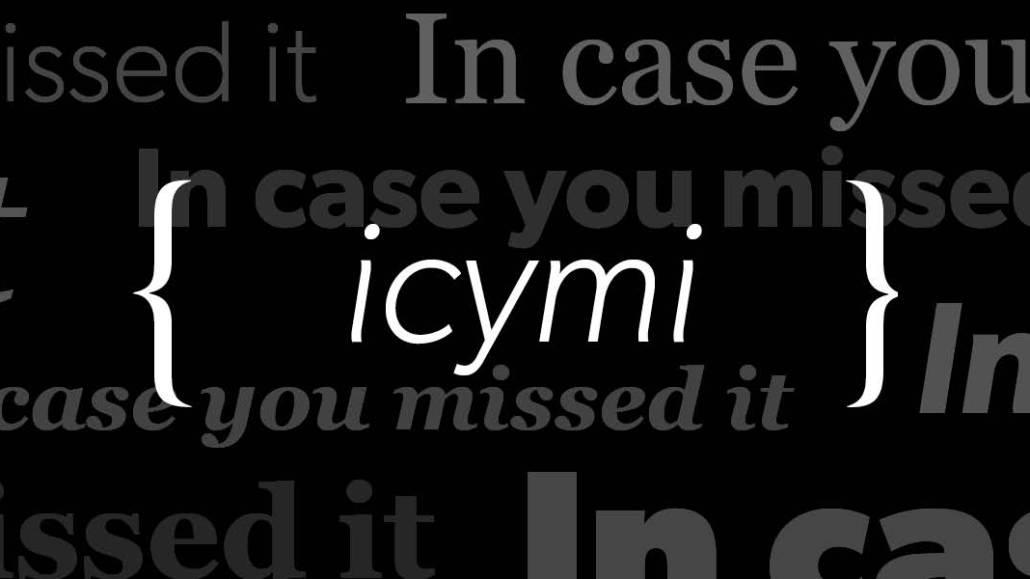Best of the week: Subscription sites like the Information can thrive, but scale isn’t dead

The new issue of Digiday Magazine is out and Lucia Moses has an excellent, in-depth profile of Jessica Lessin, the former Wall Street Journal reporter who launched the Information three years ago. With no name recognition and an output of just two stories a day, the subscription-based tech news site was asking people to pay $399 a year, a figure on a par with the Journal, a journalistic giant with a more than 120-year history and global news-gathering resources. Crazy as it sounded at the time, she’s turned her publication into a thriving little business.
“I had simply interviewed too many media companies that I felt were rushing to give away their tech content to Google and Facebook without thinking through their long-term business objectives,” the reporter-entrepreneur says. “Without the editorial experience of hundreds of interviews and stories on this space, I wouldn’t have seen the opportunity to build a different type of media company and start The Information.”
Scale is dead. Long live scale.
And yet, despite the success some niche, focused, quality publishers like Lessin are seeing, scale is far from dead in digital media, reports Lucia Moses. Scale counts for ad-driven publishers that are trying to monetize their way to being acquired or going public. And it still matters to those on the buy side. Unique monthly visitors is still the starting point of a conversation with a brand or agency.
“In 2017 ad buying, there still are 20-somethings with comScore spreadsheets that are still making decisions about what should be bought,” said Patrick Keane, president of Sharethrough and former CEO of Associated Content. “As much as brands and agencies, it’s become important for them to surround themselves with traditional household names, they talk out of both sides of their mouths. Scale wins over quality.”
Google is beating Facebook in the battle for publisher hearts and minds
Google has long tried to work with publishers, even if not always satisfactorily, on ad monetization and search results. In the past couple of years, its approach has evolved to fund news projects and support industry conferences and events like the secretive annual gathering, Newsgeist.
No one is confusing this with altruism — Google has a business to run — but this approach has helped position it more favorably with publishers than that other platform giant, Facebook. At a time of fear and loathing of platforms, you find a lot more of both directed at Facebook than Google.
Pity the agency Republican
Is there any creature more rare — and lonely — than the ad agency Republican in Trump’s America? Shareen Pathak digs in.
How L’Oréal approaches influencer marketing
Last year, L’Oréal Paris created a five-member beauty squad, made up of ethnically diverse YouTube stars, and is now having them reveal new products attend events like Paris Fashion week. Adrien Koskas, gm at L’Oréal Paris U.K., discussed the program with reporter Grace Caffyn:
“We actually took the beauty squad to the L’Oréal Paris lab earlier this month. After a lot of back and forth about the colors we can and can’t do, they shared several ideas about pigments they’d like to see. I’m sure there will be many more discussions like this as it is an ongoing relationship. For content, we’ve taken cues from them with our recent concealer launch by creating really easy how-to videos. And we also replicate some of their beauty routines — the order they use our products — at the brand level.”
The problem with viewability
Ask any marketer or agency their position on viewability, you can be sure they’ll endorse it. After all, who in their right mind could be against ads that are paid for should have the opportunity to be viewed by a human?
Easy: Those who believe the digital media experience is too often horrible, driving people to ad blocking, and worry strict viewability standards will only create a cascading effect of more ads, more intrusion and more consumer antipathy to digital advertising. The reason is simple: The most intrusive of ads are usually the most viewable.
More in Media

Here are the biggest moments in AI for publishers in 2025
Here are some of the moments that defined how publishers adapted to the AI era this year.

Digiday+ Research roundup: Gen Z news consumption and diversification in the DSP space were 2025’s top trends
As 2025 winds down, we rounded up the biggest trends of the year, based on the data that resonated the most with Digiday’s readers.

What publishers are wishing for this holiday season: End AI scraping and determine AI-powered audience value
Publishers want a fair, structured, regulated AI environment and they also want to define what the next decade of audience metrics looks like.








